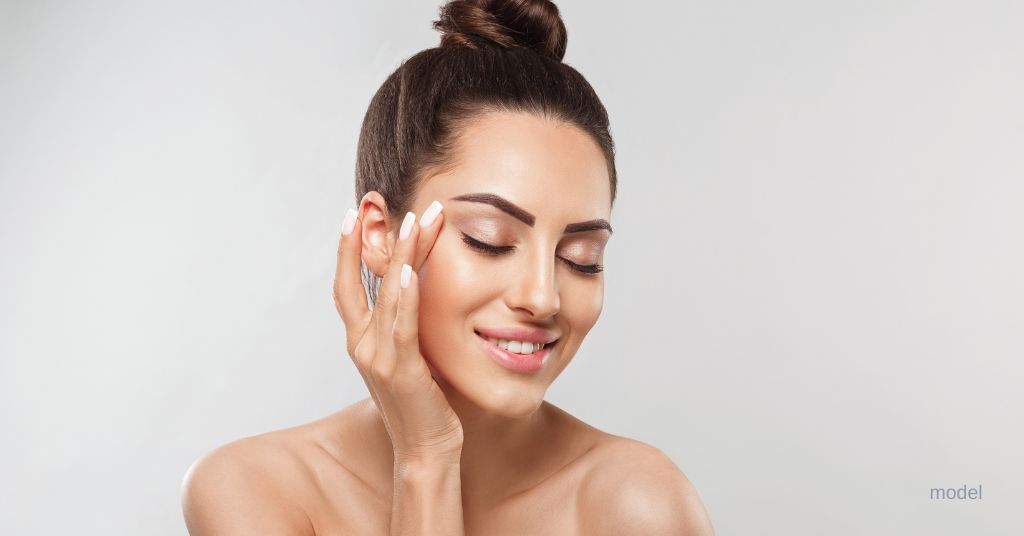Plenty of options abound in the world of wrinkle-fighting injectables, but two standout solutions are Dysport® and Restylane®. While each of these injectables offers nonsurgical facial rejuvenation, they work differently and have unique benefits. So, what are the benefits of Dysport vs Restylane, what is each used for, and which should you choose? We’re highlighting 4 key aspects of treatment to help you learn what works best for your unique needs.
1. What Is Dysport Used For?
You’re probably already familiar with Dysport’s popular predecessor, BOTOX® Cosmetic, but what exactly does Dysport do? It’s an FDA-approved injectable neurotoxin similar to BOTOX, treating dynamic wrinkles (expression lines) caused by repetitive facial muscle contractions. Once injected, Dysport temporarily blocks the nerves from telling the muscles to move, relaxing the target muscles and smoothing related wrinkles. It’s can soften and prevent glabellar lines (the 11s), crow’s feet, horizontal forehead lines, bunny lines, and other common aging symptoms in the upper face. Compared to BOTOX, Dysport is more diluted and tends to spread more easily.
2. What Is Restylane?
The Restylane family of dermal fillers temporarily adds volume and fills in static facial lines and wrinkles for a more youthful, rejuvenated appearance. Restylane also plumps the lips, lifts and contours the cheeks, and fills under-eye hollows. Restylane dermal fillers contain hyaluronic acid, which occurs naturally in the body and helps build collagen, keeping the skin supple and hydrated. We offer a variety of Restylane products as well as JUVÉDERM® and other fillers that target and treat specific areas of the face. This quick quiz can help you learn more about the different fillers we offer and which may best suit your needs.
3. Recovery & Results: Dysport vs Restylane
After Dysport treatment, most patients experience mild redness or swelling at the injection sites but can usually return to regular activities immediately. It takes about a week to see results, which should last 3 to 4 months. In contrast, many patients notice added volume and skin improvement immediately after Restylane dermal filler injections, with results lasting from 6 months to over a year. Like Dysport, recovery from Restylane is simple and well-tolerated.
4. Comparing Dysport & Restylane Cost
For Dysport, the cost is based on how many units of the neurotoxin are used during treatment, while Restylane is typically charged by the syringe. For each treatment, your price tag will depend on factors such as the number of areas treated and how much of the product is injected.
At our practice, the average cost of a Dysport treatment is $500 and Restylane syringes begin at $695. We offer various financing options to help your treatment fit comfortably into your budget.
The Takeaway
Keep your specific aesthetic goals in mind when deciding between Dysport and Restylane, and remember that Dysport primarily treats dynamic wrinkles and lines, whereas Restylane restores volume loss and adds contour. Patients who want to address both concerns can benefit from combining treatments. We’ll assess your needs during your consultation and map out a treatment plan to achieve your unique goals. Ready to get started? Request a consultation online or call us at (239) 262-5662.




Leave a Reply